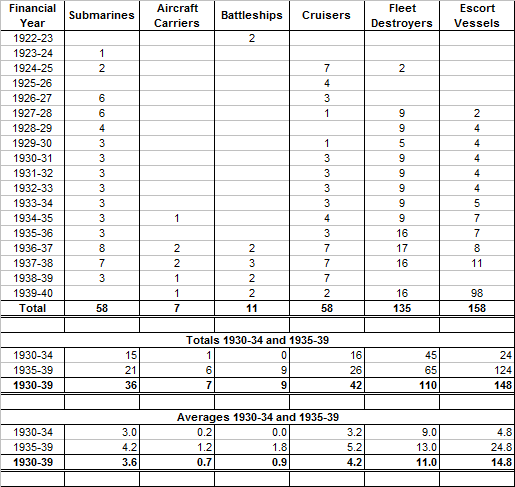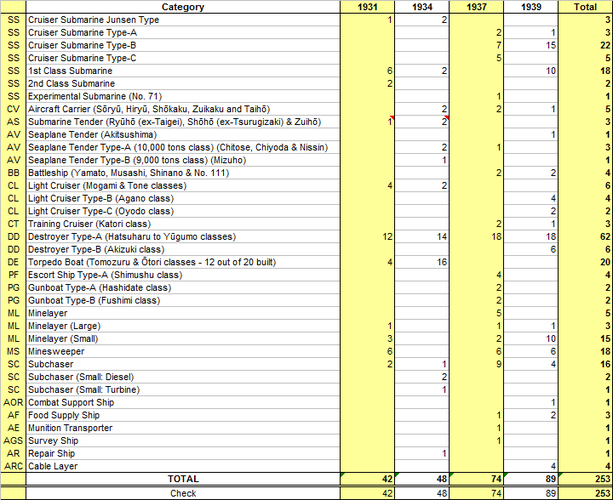For what it's worth I think a one-to-one substitution of Edinburgh class cruisers for the Colony class and its successors would have been easy.
Looking through Friedman again, offers some hints at what might have been had Second London not been agreed at all.
I do feel that 10,000tons would be retained as the ideal limit for light cruisers, 8,000 tons was too tight as the Fiji's proved and no design would have less than triple turrets.
The K34 alternative to building more Fijis drawn up in 1939 was effectively a 9-gun Fiji but with 4 pom-pom mounts. It was rejected in the face of foreign competition building up to, and suspected beyond, 10,000 tons. Nobody was building cruisers less than 10,000 tons if they didn't need to.
In 1938 proposals for 20,000 ton (700 x 70ft) heavy cruisers with 3x4 9.2in turrets were raised, although the Admiralty didn't seem keen. This was reduced to 3x3 8in guns but displacement was still 20,000tons, DNC even looked at 3x2 12in guns on that tonnage. By June 1939 this had been trimmed back to 10,000 tons, 32kt on an 80,000hp Fiji plant with 4x2 or 3x3 8in guns. The result was a Belfast/Fiji hybrid, 580 x 69ft 3in, 10,576 tons. Everyone seemed fairly happy with this until Churchill arrived on the scene and wanted 15,000-ton 9.2in armed ships. Things spiralled back to 21,000tons even with 8in guns.
In December 1939 the notional Repeat Belfast was drawn into the heavy cruiser circle with 3x3 8in at 10,000ton or 15,000 tons. They would lay down in June 1941 to complete in 1944.
In August 1940 DNC proposed a new 10,400 tonner with 3x3 6in, 4x2 4in, 4x4 pom-poms, Fiji armour but with a 2in deck and 80,000hp Fiji plant. In effect the three suspended Fijis were recast into this by losing 'X' turret.
Further tinkering with the new design led to using Belfast machinery and Belfast side armour which brought tonnage to 11,450 tons (3x3 6in) or 12,890 tons (4x3 6in).
The 8in designs to similar standard were 11,945 tons (3x3 8in) or 12,500 tons (4x2 8in).
Then designs moved on - X with 3x3 6in, Y 4x3 6in, Belfast protection 14,650 tons, Z 4x3 6in, 4in belt & 2in deck, 30.5kt, 13,500 tons. This seemed to replace the 8in heavy cruiser. But work carried on into 1941 and went back to 8in and higher tonnage.
In October 1941 DNC drew up a roomier Southampton - 9,100 tons, although it was thought 12,000 tons might be needed with all the necessary wartime additions. Instead the new 8,650 ton Fiji version was chosen and became the Tigers.
The 1939 plan was 100 cruisers: 20 heavy, 40 medium, 40 small. At that time the RN had 15 heavy, 36 medium (inc. 13 building) and 35 small (inc. 10 building) for 86 - but the 4 Hawkins and 21 C/Ds would have to be subtracted as they retired.
Annual production capacity in 1940 allowed for 10 cruisers - 4 with 6in guns and 6 with 5.25in guns. The Proposed 1940 Supplementary Programme would have added 4 8in cruisers.
But in 1940 none were ordered, in 1941 no more Didos were wanted to the plan was recast to 7 ships - 4 with 8in and 3 with 6in (the Swiftsures). Later that year 3 of the 8in were swapped for 3 more Swiftsures.
My reading of all this is that in 1938-40, allowing for the Didos, it seems likely there is capacity to lay down at least 8 6in cruisers of 9,000-11,000 tons. Untangling Fiji from the real design history is hard as it had such an impact on all the designs. Another pair of Belfasts seems certain but its likely the Belfast/Southampton machinery/armour mix would have caused the same confusion as Belfast/Fiji in terms of options and we might end up with a mix of both types and its possible the repeat Southamptons might lose a 6in turret for more 4in or an extra HADT.
Its equally possible four Improved Belfasts may have actually become 8in cruisers - especially if the Mogami rearmament becomes apparent sooner. That may leave us with 4 8in, 4 6in plus Didos. The quartet of 6in ships therefore might be Southamptons with Belfast armour thicknesses and coming out around 9,500-10,000 tons.



